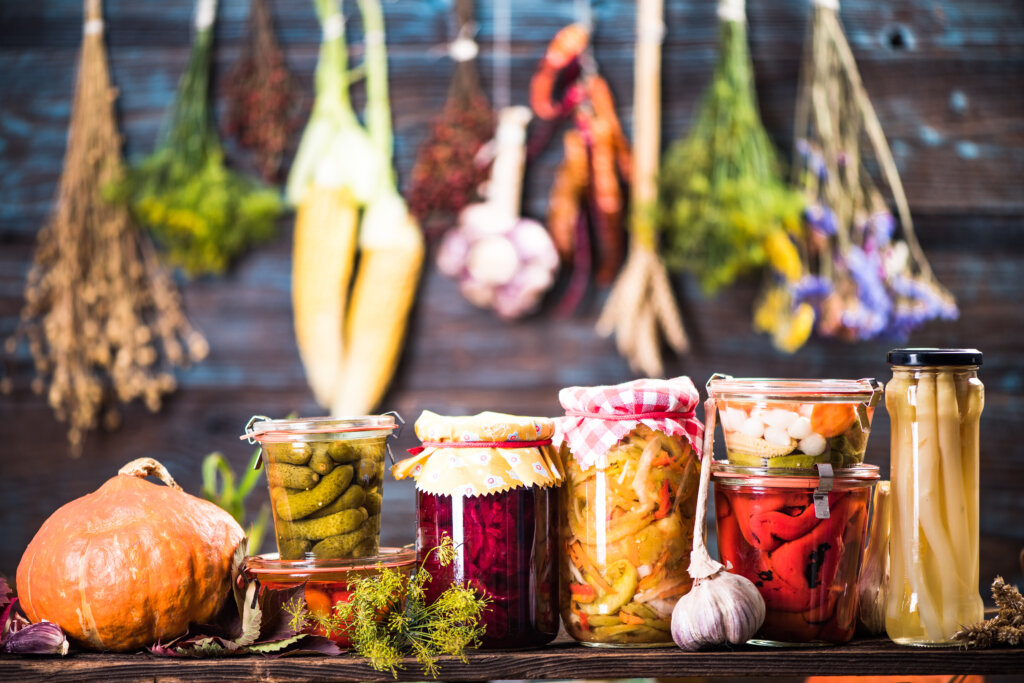Did you know that fermentation is not just a process for making beer, wine, and bread? It’s been used for centuries in various cultures for food preservation and flavor enhancement. Fermented foods also contain various health benefits.
Though fermentation is one of the world’s oldest preservation techniques, it’s finding new life as an exciting catalyst for food innovation. This year’s FlavorIQ® Food & Flavor Outlook Program: The Perfect Bite explores the delight and emotion of culinary experiences that activate the senses through themes, culinary platforms, ideas, and themes including the Fermented Future.
According to insights from MintelReports, fermented foods are becoming increasingly popular due to their numerous health benefits.
- 61% of Mexican consumers express interest in products supporting digestive/gut health, a key benefit of fermented foods, and are willing to pay a premium.
- Over the last year, 31% of Canadian protein consumers reported eating more plant-based meat substitutes, and many plant-based meat substitutes leverage fermented technologies.
- 16% of US consumers have eaten fermented toppings at home in the last six months, indicating an opportunity for brands to better position the taste and health benefits of fermented foods.

Some fermented foods benefit human health because they contain live organisms that offer a health benefit, also known as probiotics. According to the Journal of Agricultural and Food Chemistry, fermented foods can improve gut health through nutrients found in them, such as dietary fiber, which provides a favorable environment for the growth of beneficial bacteria.
With the growing demand for natural and organic food products and the increasing popularity of ethnic cuisine, it’s no surprise that the global fermented food and beverage market is projected to reach $78.7 billion by 2032.
Some of the most popular fermented foods include kimchi, kefir, kombucha, yogurt, sauerkraut, and miso. Apart from imparting a flavorful zest to foods, they contain other important nutrients such as protein, calcium, and fiber.
- 36% of Mexican consumers think kombucha will positively affect their health.
- 48% of Canadian consumers want “Better Digestion” in healthy foods.
- 37% of US consumers are interested in snacks containing immune-boosting ingredients
Appealing Fermented Flavors on the Rise
The protein industry has significantly shifted towards fermented plant-based meat, egg, and dairy alternatives. Based on a Technomic Canada report, plant-based poultry is the fastest-growing alternative protein on menus, followed by tempeh.

With fermentation of foods being on the rise:
- 82% of Mexican consumers find Whiskey to be an appealing fermented flavor.
- 68% of Canadian consumers find Miso to be an appealing fermented flavor.
- 59% of U.S. consumers find Preserved Lemon to be an appealing fermented flavor.
Revolutionary processes like precision fermentation have made it possible to replicate animal products’ taste and texture accurately.
A Zesty Journey into Protein-rich Kimchi and Miso

Fermented foods are taking the culinary world by storm. Traditional Asian dishes such as kimchi and miso are becoming increasingly popular and are now considered stars of the show. These tangy and flavorful delicacies can be incredibly healthy.
A recent survey found that:
- 32% of US consumers have tried kimchi and are willing to try it again.
- 21% of US consumers are interested in trying kimchi for the first time.
- 35% of US consumers are interested in seeing miso flavors in restaurant menu items.
The Future of Food is Looking Pickled, Vinegary, and Fermented Happy
Looking ahead, the future of food looks pretty fermented!
- 80% of U.S. Consumers find Dill Pickles to be an appealing flavor.
- 65% of U.S. Consumers find Apple Cider Vinegar to be an appealing flavor.
- 57% of U.S. consumers find miso to be an appealing flavor.
With the rise of fermented snacks, restaurants can offer delicious, flavorful, and gut-friendly fermented flavors.
Unlocking the Potential of Sustainable and Nutritious Food for the Future
The rise of fermented foods and plant-based alternatives is changing how we approach food and dining.

Harnessing the power of fermentation can enhance the nutritional value of plant-based foods and elevate their culinary flavor, creating a delightful fusion of health and taste. The fermentation process offers unique flavors and numerous health benefits, making it a valuable addition to our diets.
As more quick-service restaurants and fast-casuals adopt plant-based fermented meat alternatives, we expect more experimentation with these exciting new flavors.
Are you ready to elevate your food products with innovative and sustainable solutions?
FlavorIQ® Food & Flavor Outlook Program
At Griffith Foods, we turn insights and culinary creativity into new opportunities with our FlavorIQ® Food & Flavor Outlook Program. Through our annual culinary theme program, we curated a list of key culinary themes that reflect the food industry’s current state and our prediction for what’s next. Learn more about our program and themes here.
Let’s Create Better Together
We’re here to help inspire creations that keep your product portfolio on trend. Contact your Griffith Foods representative or reach out to our sales team to learn more about our ongoing research and innovative offerings.



